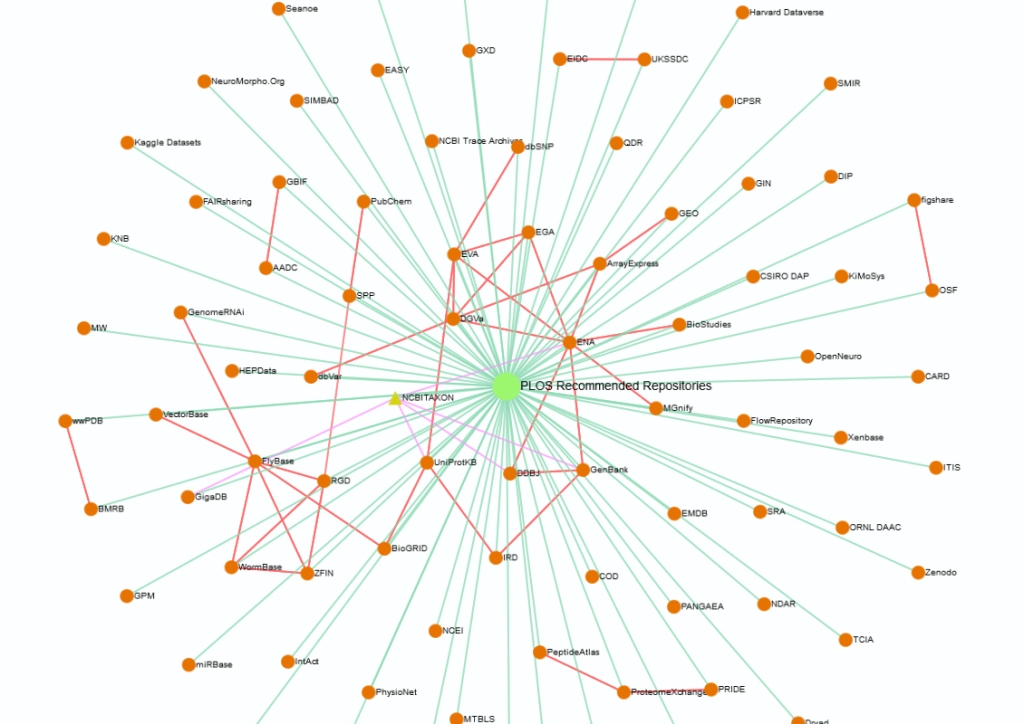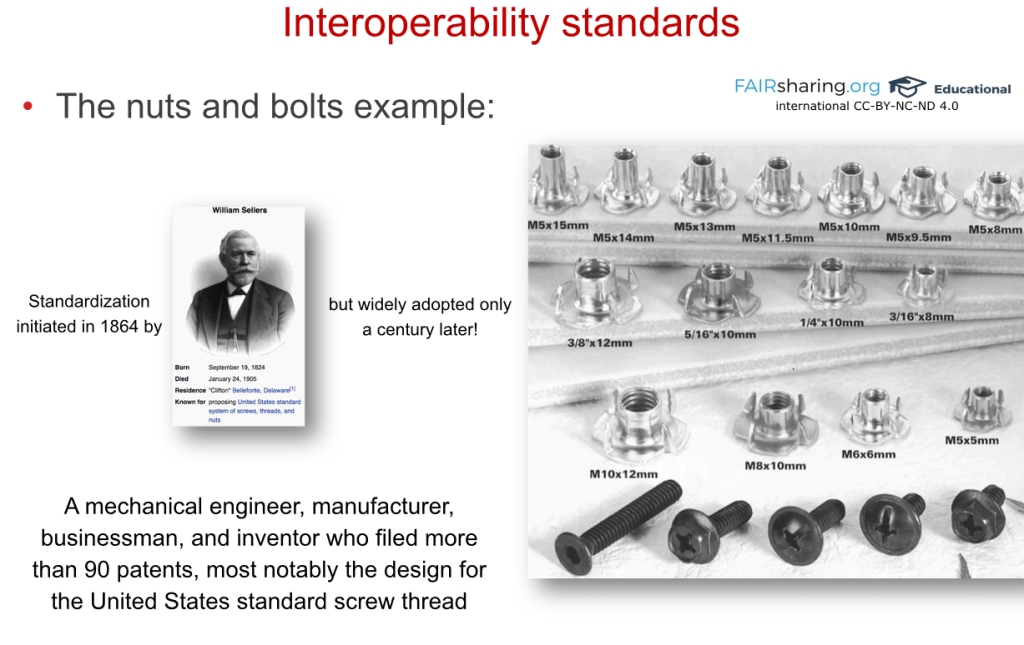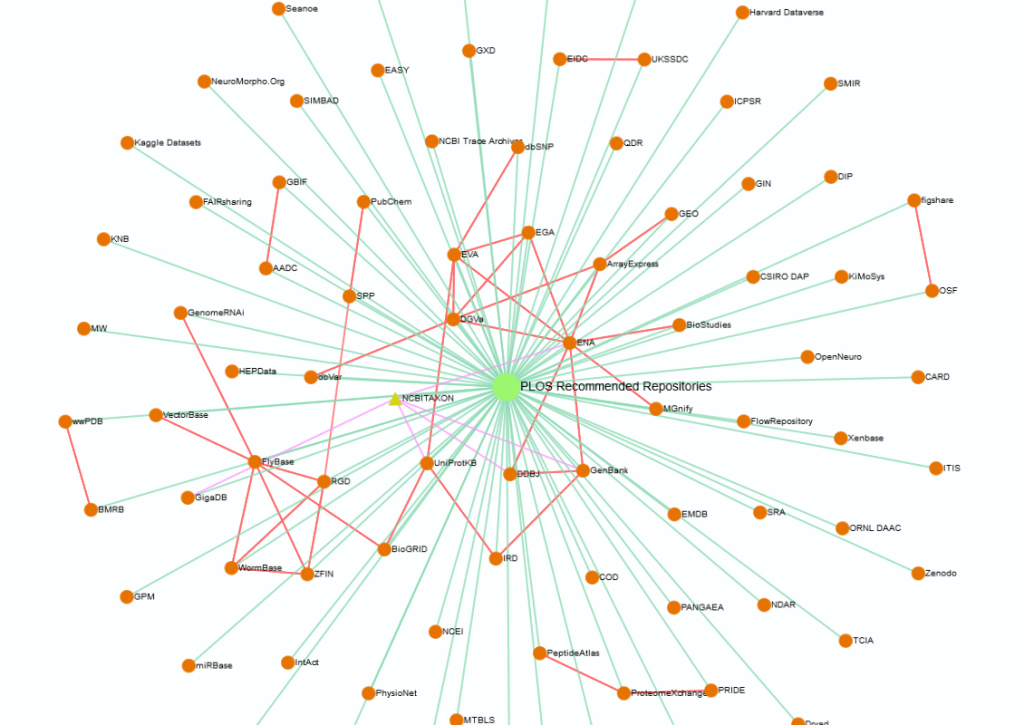This post is reproduced from the ‘Open Working’ blog from the 4TU.Centre for Research Data and TU Delft Research Data Services, by Esther Plomp, Paula Martinez Lavanchy, Marta Teperek, santosh Ilamparuthi, and Yasemin Turkyilaz-van der Velden.
JULY 10, 2020
FAIRsharing: how to contribute to standards?
Contributors in order of chronological contribution: Esther Plomp, Paula Martinez Lavanchy, Marta Teperek, Santosh Ilamparuthi, and Yasemin Turkyilmaz – van der Velden.
FAIRsharing organised a workshop for the Data Stewards and Champions at TU Delft on the afternoons of the 11th and 12th of June. We were joined by colleagues from University of Stuttgart, RWTH Aachen University, Technical University of Denmark (DTU), and the Swiss Federal Institute of Technology Lausanne (EPFL).
FAIRsharing is a cross-disciplinary platform that houses manually curated metadata on standards, databases and data policies. FAIRsharing works together with a large community that can add their metadata standards, policies and databases to the platform. You can view the introduction presentation here (see here for the slides).
During the first day of the workshop, which was led by Peter McQuilton, there was a demonstration of how to search FAIRsharing and how to apply the standards therein. The curation activities involved around the standards and databases in FAIRsharing were also explained in detail. On the second day, the participants discussed how to develop standards when there are no community-endorsed standards available and also how to contribute a standard to FAIRsharing. You can view a recording of the second day here (slides available here).
Day 1: FAIR and FAIRsharing
For anyone that has never heard of the FAIR principles (Findable, Accessible, Interoperable and Reusable), a short explanation is outlined below:
Findable
- For your information/data to be findable, it needs to be discoverable on the web
- It needs to be accompanied by a unique persistent identifier (e.g., DOI)
Accessible
- For your information/data to be accessible, it needs to be clearly defined how this would be possible, and appropriate security protocols need to be in place (especially important for sensitive data which contains personal information)
Interoperable
- For your information/data to be interoperable, it needs to be machine-actionable; it needs to be structured in a way that not only humans can interact with it, but also software/machines
- Your data can be more easily integrated with data of other researchers when you use community adopted standards (formats and guidelines such as a report or publication)
- You should link your information/data to other relevant resources
Reusable
- For your information/data to be reusable, it needs to be clearly licensed, well documented and the provenance needs to be clear (for example, found in a community repository)
During our workshop, the FAIRsharing team highlighted that in order to make data truly FAIR, we need to have data standards! FAIRsharing helps people find disciplinary standards and provides support on application of standards. Delphine Dauga highlighted that it is important for communities to share vocabularies in order to effectively communicate with each other, as well as with machines.You can view the recording of her talk on the curation process of standards on FAIRsharing.org on YouTube.
You can contribute to FAIRsharing by adding standards. During the workshop we were guided byAllyson Lister through this process.

Day 2: How to contribute to, or develop, a standard?
To start off this day, a definition of “a standard” was given by Susanna Sansone. A standard is an agreed-upon convention for doing ‘something’, established by community consensus or an authority. For example, nuts and bolts are currently following international standards that outline their size, but this was not always the case (see below)!

When you cannot find an applicable standard and you’re ready to work on a new standard, you should set up a community of governance for the standard. This means that a group should be established with individuals that have specific roles and tasks to work on the standard. Groups that are developing standards should have a code of conduct to successfully operate (for example, see The Turing Way code of conduct). There are different directions the group can take, one is to work under established or formal organisations which produce standards that might be adopted by industry (think of standards that govern the specifications of a USB drive), or grass-roots groups that form bottom up communities. There are advantages and limitations to both. The formal organisations already have developmental processes in place which may not be flexible but can engender greater trust to the end users. The grass-roots groups, while not having an established community to begin with, provide greater flexibility and are often the route taken when developing research level standards.
Development of a standard requires time and commitment
The standard needs to be tested and open to feedback, possibly multiple times over a long time period. The group needs to generate a web presence and share the different versions of the standard, ideally in a place that people can contribute to these versions (e.g., GitHub). It is desirable to use multiple communication channels to facilitate broad and inclusive contributions. These contributions do not stop when the standard is developed, but will need to be maintained and new requests for changes and contributions will have to be implemented. To maintain momentum, one should set clear timelines and ensure that there are moments where more intensive discussions can take place. This governance group needs to be sustainable. Sustainability can be ensured by dedicated funding, or by identifying other ways that can guarantee the maintenance of the group.
Community engagement
When working on new standards, it is good to first look at existing standards such as ISO/TC 276or ISA, IEEE, ASTM, ANSI, and release any technical documentation that you have with practical examples so that all community members will be able to understand what needs to be done and contribute effectively. It also helps to create educational materials for diverse stakeholders to make it easier for them to engage with the development of the standard.
The success of grass-root governance groups depends on their ability to sustain the work in all phases, reward and incentivise all contributors, and deliver a standard that is fit for purpose. This is thus not primarily technical development but also depends on how well you are able to set up and maintain a community that contributes to the standard. After all, a standard is not going to adopt itself!
If you need more information on how you can maintain an (online) community, you can see this blog for some more pointers.
FAIRsharing continues to grow and work with the community to ensure the metadata captured therein is as comprehensive and accurate as possible. To help with this, FAIRsharing is looking for users with specific domain experience to help with the curation of appropriate resources into FAIRsharing. This new initiative, to recruit Community Curators, will roll out over the summer. Please contact them (contact@fairsharing.org) to find out more!
Latest developments
FAIRsharing is in the process of integrating FAIRsharing withDMPonline. They are also setting up a collection of all the available tools to assess whether digital objects are FAIR on FAIRassist.org. FAIRsharing is also working on standard criteria for recommending data repositories (see below) so that publishers can assess whether they should endorse a certain data repository.
FAIRsharing is currently being redesigned, with a new version being released by the end of 2020, and they are always happy to hear from you (through email, Facebook or Twitter) what is still missing!
